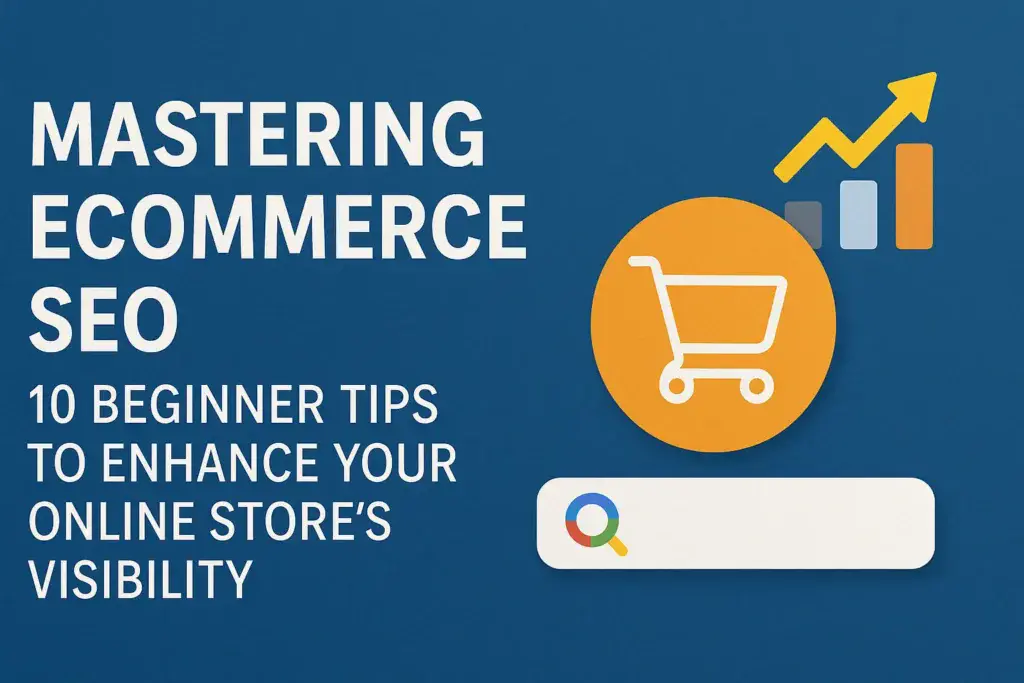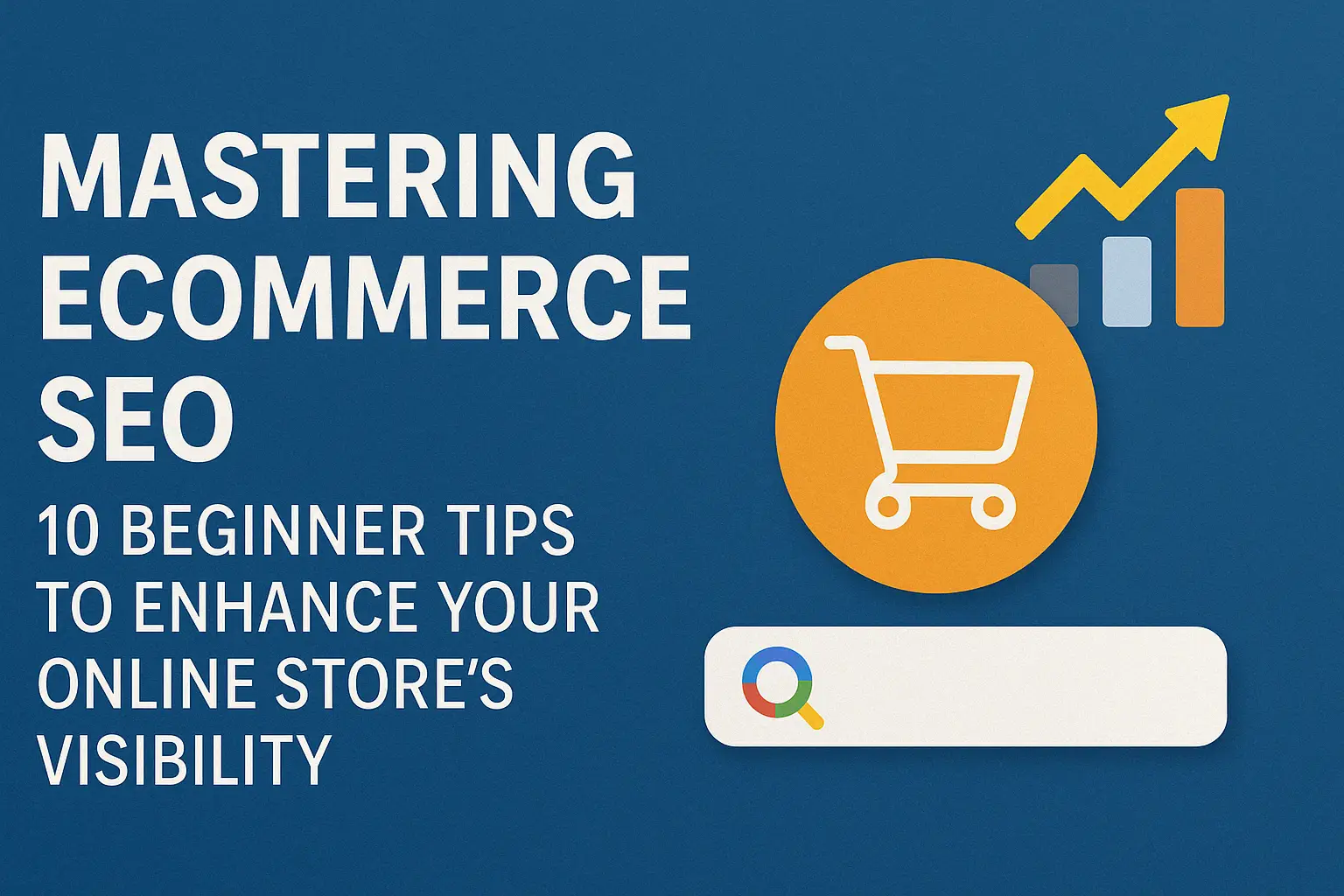
In today’s competitive digital marketplace, excelling in eCommerce SEO is your pathway to differentiation and success. As online retailers and digital marketers understand, effective SEO strategies can substantially increase your store’s visibility, attracting more potential customers to your online platform. Whether you’re launching your eCommerce journey or honing your existing strategy, comprehending the essentials of keyword optimization, strategic use of meta tags, and quality backlink development is pivotal. In this blog post, we’ll present ten beginner-friendly tips that will guide you in creating intuitive navigation and optimizing product pages to boost your search engine rankings. Join us as we explore the fundamentals, empowering you to leverage analytics tools and content marketing to not only drive traffic to your e-commerce venture but also to build trust and loyalty among your audience. For an exhaustive guide on eCommerce SEO, consider exploring this detailed resource from Shopify.
Understanding eCommerce SEO Basics
Before delving into specific strategies, it’s essential to understand the basics of eCommerce SEO. This section examines the significance of SEO for online stores, common pitfalls to avoid, and how to set achievable goals for your SEO initiatives.
Importance of SEO for Online Stores
SEO is the cornerstone of any flourishing e-commerce business. It’s not merely about achieving high search engine rankings; it’s about connecting with your target audience at opportune moments.
Visibility and Traffic: Well-executed SEO positions your store in front of potential customers who are actively searching for your products. This focused approach results in higher-quality traffic and greater conversion potential.
Customer Trust: Landing on the first page of search results enhances your brand’s credibility. Users often perceive top-ranking sites as more reliable and authoritative within their niche.
By implementing robust SEO strategies, you establish a consistent source of organic traffic, diminishing your dependence on paid advertising and securing long-term success for your online store.
Common SEO Mistakes to Avoid
Even experienced eCommerce professionals can stumble into SEO traps. Recognizing and avoiding these frequent mistakes is essential for maintaining a robust search presence.
-
Neglecting mobile optimization: With the rise of mobile commerce, ensuring your site is responsive across all devices is crucial.
-
Duplicating content: Search engines penalize sites with repetitive product descriptions or pages. Always craft unique content for each product and category.
Ignoring site speed: Slow-loading pages frustrate users and damage rankings. Regularly analyze and enhance your site’s performance to maintain low load times.
Overlooking local SEO: If you have a physical location or serve specific regions, ignoring local SEO tactics can cost you valuable nearby customers.
By avoiding these pitfalls and focusing on best practices, you’ll create a solid foundation for your eCommerce SEO efforts.
Setting Realistic SEO Goals
Establishing clear, attainable SEO objectives is crucial for tracking progress and sustaining motivation. Your goals should align with your overall business strategy and be both ambitious and achievable.
Short-term vs. Long-term: Balance quick gains with ongoing growth. Set monthly targets for metrics like organic traffic or keyword rankings, alongside yearly goals for market share or revenue from organic search.
KPI Focus: Identify key performance indicators (KPIs) that truly matter to your business. These might include:
-
Organic traffic growth
-
Conversion rate from organic visitors
-
Average order value from SEO-driven sales
-
Keyword rankings for high-value terms
Remember, SEO is a marathon, not a sprint. Patience and consistency are essential as you work towards your goals. Regularly review and adjust your objectives based on performance data and evolving market conditions.
Optimizing Your Keyword Strategy
A well-devised keyword strategy is the backbone of successful eCommerce SEO. This section will guide you in identifying relevant keywords, effectively placing them, and leveraging long-tail keywords for niche markets.
Finding Relevant Keywords
Discovering ideal keywords is a critical first step in optimizing your eCommerce site. It involves understanding what your potential customers are searching for and aligning your content with their needs.
Keyword Research Tools: Utilize platforms like Google Keyword Planner, SEMrush, or Ahrefs to find high-volume, relevant search terms. These tools offer valuable insights into search trends and competition levels.
Competitor Analysis: Examine your competitors’ keyword strategies. Identify gaps in their approach that you can exploit, or high-performing keywords you might have missed.
Consider the following when selecting keywords:
-
Search volume
-
Relevance to your products
-
User intent (informational, transactional, navigational)
-
Competition level
By focusing on a mix of high-volume and niche-specific keywords, you can craft a comprehensive strategy that attracts targeted traffic to your store.
Effective Keyword Placement
After identifying your target keywords, strategically incorporating them into your site’s content is crucial. The objective is to signal relevance to search engines without sacrificing the user experience.
Key Areas for Keyword Placement:
-
Product titles and descriptions
-
Meta titles and descriptions
-
Header tags (H1, H2, H3)
-
URL structures
-
Image alt text
Natural Integration: Avoid keyword stuffing. Instead, focus on crafting valuable, informative content that naturally integrates your target terms. This approach not only satisfies search engines but also captivates your audience.
Remember, effective keyword placement extends beyond just including the terms. Consider the context and intent behind each keyword to ensure your content genuinely addresses your potential customers’ needs.
Long-Tail Keywords for Niche Markets
Long-tail keywords are longer, more specific phrases that often have lower search volume but higher conversion potential. For niche eCommerce stores, they can be particularly advantageous.
Benefits of Long-Tail Keywords:
-
Less competition
-
Higher conversion rates
-
More targeted traffic
-
Easier to rank for
Identifying Long-Tail Opportunities: Use tools like Answer the Public or Google’s “People Also Ask” section to discover long-tail variations of your primary keywords. These often reflect specific customer queries or challenges.
Integrate long-tail keywords into your product pages, blog posts, and FAQ sections. By addressing specific customer needs, you’ll not only enhance your search visibility but also showcase your expertise in your niche market.
Enhancing On-Page SEO Elements
On-page SEO involves optimizing individual web pages to rank higher and attract more relevant traffic. This section focuses on crafting compelling meta tags, improving navigation, and structuring SEO-friendly URLs.
Crafting Compelling Meta Tags
Meta tags play a critical role in how search engines interpret and display your pages in search results. Well-crafted meta tags can significantly enhance click-through rates and search rankings.
Meta Title: This is often the first element users see in search results. Keep it under 60 characters, include your primary keyword, and ensure it is compelling enough to drive clicks.
Meta Description: While not a direct ranking factor, a well-crafted meta description can improve click-through rates. Aim for 150-160 characters, naturally include relevant keywords, and provide a clear, enticing summary of the page content.
Consider these best practices:
-
Use unique meta tags for each page
-
Include your brand name in titles when possible
-
Ensure meta content accurately reflects page content
-
Use action-oriented language in descriptions
Optimizing your meta tags not only improves your SEO but also creates more engaging search listings that attract qualified traffic to your store.
Improving User-Friendly Navigation
A well-structured, intuitive navigation system is critical for both user experience and SEO. It aids visitors in quickly finding what they’re looking for and helps search engines understand your site structure.
Key Navigation Elements:
-
Clear, descriptive menu labels
-
Logical category hierarchy
-
Breadcrumb navigation
-
Internal linking between related products/categories
-
Site search functionality
Mobile Considerations: Ensure your navigation is responsive and easy to use on mobile devices. This is crucial for maintaining a positive user experience across all platforms.
The goal is to help users find products with minimal clicks. Regularly analyze user behavior data to identify and resolve any navigation challenges, improving both SEO and conversion rates.
Structuring SEO-Friendly URLs
Well-structured URLs enhance SEO performance and user experience. They provide clear information about page content to both search engines and users.
Best Practices for SEO-Friendly URLs:
-
Keep URLs short and descriptive
-
Use hyphens to separate words
-
Include relevant keywords
-
Avoid unnecessary parameters or numbers
-
Use lowercase letters
URL Structure Example:Good: www.yourstore.com/mens-shoes/running-shoesBad: www.yourstore.com/category.php?id=123&product=456
Implement a consistent URL structure throughout your site. For eCommerce, this often means adhering to a logical hierarchy: domain.com/category/subcategory/product-name.
By creating clean, informative URLs, you’re enhancing your site’s crawlability and providing users with a better understanding of your site structure, boosting both SEO and usability.
Boosting Off-Page SEO Techniques
Off-page SEO includes all activities outside your website to improve its search engine rankings. This section covers building high-quality backlinks, leveraging social media, and engaging in influencer collaborations.
Building High-Quality Backlinks
Backlinks continue to be a crucial factor in search engine rankings. Quality backlinks from reputable sites signal to search engines that your content is valuable and trustworthy.
Strategies for Earning Backlinks:
-
Create shareable, high-quality content
-
Engage in guest blogging on relevant sites
-
Develop relationships with industry influencers
-
Participate in industry forums and discussions
-
Leverage broken link-building techniques
Quality Over Quantity: Focus on securing links from authoritative, relevant websites within your niche. A few high-quality backlinks can outweigh numerous low-quality ones.
Remember, natural link-building requires time and dedication. Steer clear of shortcuts like buying links, as they can lead to penalties from search engines. Instead, focus on creating content that deserves links and fostering authentic industry relationships.
Leveraging Social Media for SEO
Although social media signals aren’t direct ranking factors, a robust social presence can indirectly enhance your SEO efforts by increasing brand visibility and driving traffic to your site.
Key Social Media SEO Benefits:
-
Increased content visibility and shares
-
Opportunity for link acquisition
-
Improved local SEO (through location-based posts)
Platform-Specific Strategies: Tailor your methods to each social platform. For example, use Pinterest for visual product promotion, LinkedIn for B2B connections, and Instagram for lifestyle and behind-the-scenes content.
Integrate social media into your broader marketing strategy. Share your blog posts, product updates, and industry news to keep your audience engaged and encourage social sharing, which can lead to natural backlink opportunities.
Engaging in Influencer Collaborations
Collaborating with influencers can greatly expand your brand’s reach and credibility, indirectly supporting your SEO efforts through increased brand mentions and potential backlinks.
Benefits of Influencer Marketing:
-
Expanded audience reach
-
Enhanced brand credibility
-
Potential for high-quality backlinks
-
Opportunities for user-generated content
Choosing the Right Influencers: Seek out influencers whose audience aligns with your target market. Micro-influencers with highly engaged followers can often deliver better ROI than celebrities with larger but less engaged audiences.
Develop genuine relationships with influencers in your niche. Collaborate on content creation, product reviews, or social media takeovers. These partnerships can lead to valuable backlinks, increased brand mentions, and a boost in referral traffic, all contributing to your overall SEO performance.
Utilizing Technical SEO Tools
Technical SEO is the foundation of a well-optimized eCommerce site. This section discusses implementing schema markup, analyzing performance with analytics tools, and staying updated with SEO trends.
Implementing Schema Markup
Schema markup involves adding code to your website to help search engines provide more informative results for users. For eCommerce sites, it’s especially beneficial in enhancing product listings in search results.
Key Schema Types for eCommerce:
-
Product schema
-
Review schema
-
Price schema
-
Availability schema
Implementation Steps:
-
Identify relevant schema types for your products
-
Generate the appropriate JSON-LD code
-
Test your markup using Google’s Structured Data Testing Tool
-
Implement the code on your product pages
By utilizing schema markup, you can increase your click-through rates from search results, potentially boosting your organic traffic and sales. It’s a powerful tool to stand out in crowded search engine results pages (SERPs).
Analyzing Performance with Analytics Tools
Data-driven decision-making is fundamental to SEO success. Analytics tools offer insights into your site’s performance, user behavior, and areas for improvement.
Essential Analytics Tools:
-
Google Analytics for traffic and user behavior data
-
Google Search Console for search performance insights
-
SEMrush or Ahrefs for competitive analysis and keyword tracking
Key Metrics to Monitor:
-
Organic traffic growth
-
Conversion rates from organic search
-
Bounce rates and time on site
-
Top-performing pages and products
-
Keyword rankings and click-through rates
Regularly assess your analytics data to identify trends, detect issues early, and make informed decisions about your SEO strategy. Use this data to refine your approach and concentrate on tactics that deliver the best results for your eCommerce store.
Keeping Up with SEO Trends and Updates
The SEO landscape is constantly evolving, with search engines regularly updating their algorithms. Staying informed about these changes is critical for maintaining and improving your search rankings.
Ways to Stay Updated:
-
Follow reputable SEO blogs and news sites
-
Attend industry conferences and webinars
-
Participate in SEO forums and communities
-
Subscribe to newsletters from SEO thought leaders
Adapting to Changes: When significant updates occur, evaluate their potential impact on your site. Be prepared to modify your strategies accordingly, always focusing on delivering value to your users.
Remember, while it’s important to stay informed about SEO trends, the fundamentals of crafting high-quality, user-focused content and delivering an exceptional user experience remain constant. Balance new tactics with tried-and-true SEO practices for sustained success.

